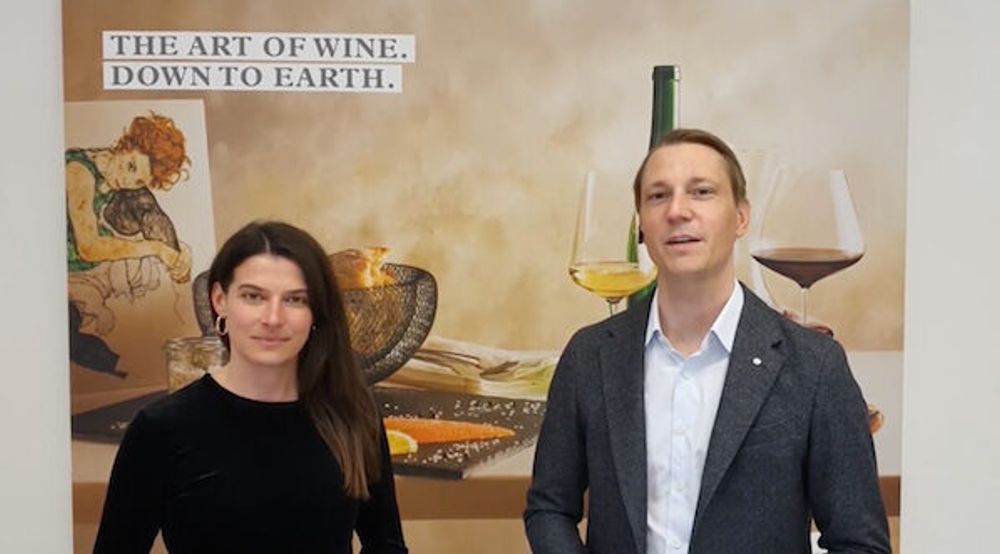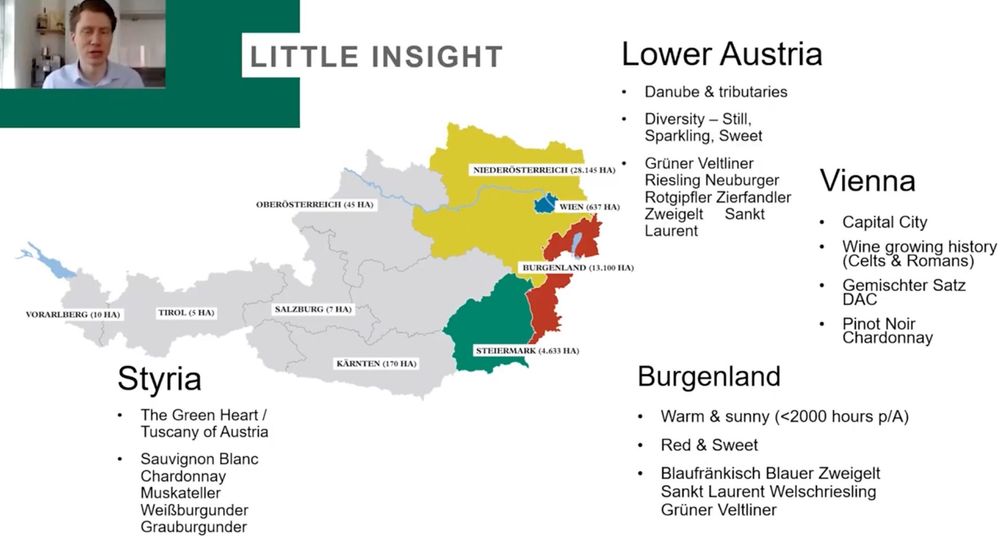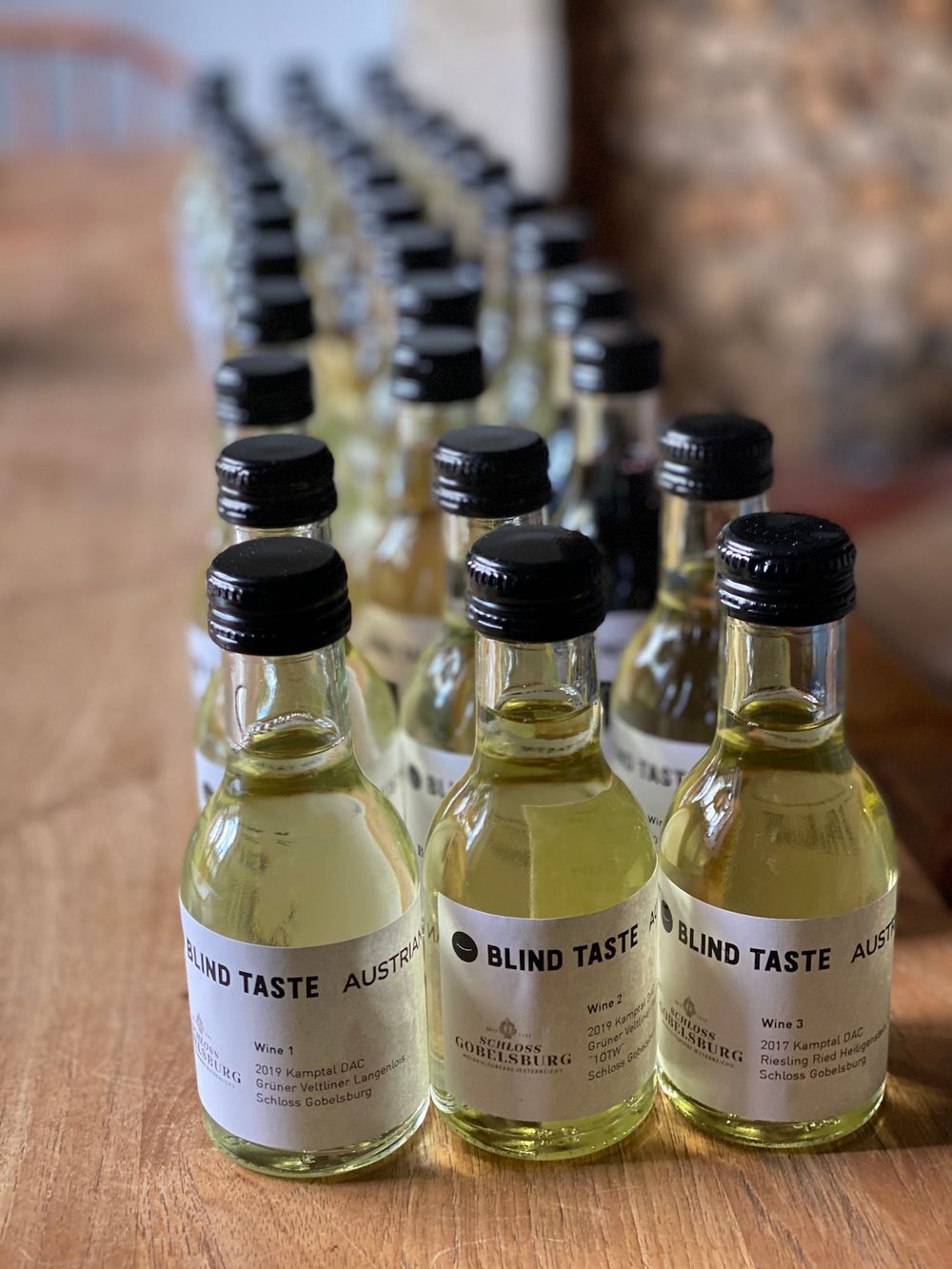Tina Iorlano of Liberty Wines remembered the wine pairing advice given to her by the head sommelier, on her first day working in a fine dining establishment: “Whenever you are in doubt, always go for Grüner Veltliner.”
“The whole is greater than the sum of its parts…” Stefan Neumann MS quoted Aristotle as he launched his introductory session extolling the virtues of Austrian wine, but the words could just as easily have applied to this inaugural ‘stay at home’ tasting – Austrian Tasting UK.
Covid 19 has been with us far longer than we could possibly have feared just over a year ago, when ‘Zoom’ went from being a song by Fat Larry’s Band to a near-daily fixture in our lives. Happily, virtual events have come a long way since those early days when, thanks to a lack of samples, we remained as dry as the content.
Now, such events are replacing the set piece trade tastings, on a scale that would have been difficult to imagine when the first lockdown was announced on March 23rd 2020. The messages are now properly crafted, the samples plentiful.

The team from Austrian Wine kicked off the day-long event last Monday – at 9am precisely
The latest, from Austrian Wine, was a real logistical feat, with more than six thousand individual 0.1cl samples selected earlier this year by 170 attendees who all convened on Brella, the virtual event platform, where producers were able to ‘host’ their guests in chat rooms. In all, there were 280 such meetings with more than 1300 messages exchanged between producers and attendees.
Though ‘Austrian efficiency’ might be a rather lazy stereotype, the trade body did nothing to discourage such thinking, with the samples arriving in good time (and, generally, decent condition), a detailed tasting list and the day’s events offering a structured feel that went some way to replicating the normal, real life, tasting.
The event, coinciding with the limited reopening of hospitality in England for outdoor dining, attracted 75 delegates from the on trade, with 41 from the off trade, 19 importers and 20 from the media.

The initial session from Neumann (one of only three Austrian Master Sommeliers), entitled ‘Discover Austrian Wine’ and drawing on that Aristotle quote, was textbook, in both the figurative and literal senses, packing masses of detail from geography and climate conditions to soil diversity, value for money and pairing potential into a snappy half hour.
Talking of “the tension of opposites”, with warm drying winds from the east, Atlantic influence from the west, cool air from the north and warm Mediterranean breezes from the south, Neumann neatly captured the conditions that make Austria’s wine regions so special, whilst also cautioning that Climate Change threatened that precious equilibrium, with producers forced to adapt by replanting in some of the country’s warmer areas.
Though international sales are still dominated by its signature grape, Grüner Veltliner, which accounts for a third of all Austria’s plantings, Neumann made the case for other varieties, comparing Neuburger to Assyrtiko, Blaukränkisch to Sangiovese and Sankt Laurent to Pinot Noir.

Rainer from Weingut Christ talking to The Buyer: every winemaker was available in ‘meeting rooms’
In a later panel discussion, chaired by Patrick Schmitt MW, Lance Foyster MW spoke about the growing interest in Austria’s red varieties, while Peter Honegger of Newcomer Wines evangelised about Blaufränkisch, its “world class red variety.”
In the same session, Tina Iorlano of Liberty Wines remembered the wine pairing advice given to her by the head sommelier, on her first day working in a fine dining establishment: “Whenever you are in doubt, always go for Grüner Veltliner.”
Though definitely greater than the sum of its parts, it remains impossible to replicate a full trade tasting in virtual form, but from the 36 samples I received, this was my top 10:
Top 10 favourite wines from Austrian Tasting UK – The Stay-at-home Edition

2019 Grüner Veltliner Ried Moosburgerin, Kremstal DAC, Josef and Philipp Brundlmayer
Hand-harvested with 30 hours maceration, vinified in used oak without sulfites, with low intervention winemaking the guiding principle. A bountiful nose of nectarine, apricot and ripe pear lead into a rich, concentrated wine, full bodied and bone dry with a peppery, yeasty depth. (Imported by Flint Wines)
2018 Riesling Ried Gänstreiberin, Kremstal DAC, Sepp Moser
From a biodynamic pioneer, Demeter certified since 2009, a delicious nose of tarte tatin, apricot and greengage, complex and textured, dappled with peppery spice, the finish is long and sumptuous. (Imported by Boutinot)
2018 Sauvignon Blanc, Ried Edelschuh, Südsteiermark DAC,Wohlmuth
With delicate lemon blossom and wet flint on the nose, opening into a symphony of citrus flavours, with yellow plum and an elegant savoury depth. Styrian Sauvignon at its best. (Imported by Ester Wines)
2017 Riesling, Ried Steinmassl, Kamptal DAC, Loimer
From another biodynamic legend, famous for his vineyard sheep, the nose is lean and mineral, with a light smoky note, but there’s a lavish feast of stone fruit on the palate, held in check by a clean citrus acidity. (Imported by Liberty Wines)
2020 Grüner Veltliner, Kamptal Terrassen, Kamptal DAC, Bründlmayer ,
From vines grown on elevated terraces, as the name suggests, with wonderful, bright, zesty white grapefruit and green apple and lychee, mouth puckering acidity and clean, wet stone, this is sunshine on a rainy day. (Imported by Bancroft Wines)
2019 Grüner Veltliner “Langenloiser Alte Reben”, Kamptal DAC, Brundlmayer
From old vines, a lovely nose of lemon verbena and greengage leads into a rich creamy palate, with plump stone fruit and herbal spice. (Imported by Bancroft Wines)
2019 Riesling Alte Reben Ried Heiligenstein, Kamptal DAC, Jurtschitsch
Subtle, yet aromatic, with fresh pithy lemon, pineapple and peach skin. The plump fruit dances on cool granite. It is pure, poised and complex to the long finish. Outstanding. (Imported by Newcomer Wines)
2019 Riesling Alma Amphore-Quevre, Salomon Undhof
From amphora buried in the winery garden, there’s fleshy white grapefruit, honeydew melon, pear skin and putty, leading into a bright and broad textured wine, with a delicate herbal finish. (Imported by Lea&Sandeman)
2018 Blaufränkisch,Ried Edelgrund, Burgenland, Gebrüder Nittnaus
Juicy red cherries, blueberries and foraged blackberry, there’s a real tang to the fruit, with a sense of precision and elegance to the tannic structure. (Imported by Friarwood)
2018 Burgenland TBA Sämling 88 Helmut Lang
From vines close to Lake Neusiedl, a sumptous wine, with 143 grammes of residual sugar, intense, slightly smoky, with ripe cooked apple and marmalade, the intense sweetness somehow still feels poised thanks to the bright acidity. (Imported by Clark Foyster)










































